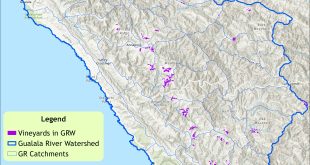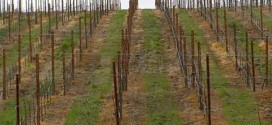Conservation during the new “Grape Rush”
Peter R. Baye, Ph.D.
New vineyards are continuing to spread rapidly, replacing oak woodlands, grasslands, mixed evergreen forest, and even redwood forests of Sonoma and Mendocino County. The full extent of future vineyard conversions is difficult to forecast. In Napa County, market conditions for premium wine grapes have driven vineyard conversions up steeper slopes and more varied soil types that traditional vineyards of the Napa Valley. In northern Sonoma County, large and numerous vineyards are now appearing even around areas of serpentine soils near Lake Sonoma, and on high ridgetops and steep slopes of the outer coast ranges. This change in the landscape is beginning to become quite visible, both visually and politically.
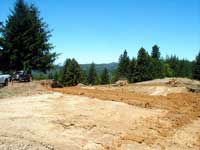 Many vineyard conversions, particularly in oak woodlands and grasslands, are currently allowed without permits that trigger environmental reviews (under CEQA), despite the major environmental effects of converting rangeland to intensive agriculture. Some conversions to vineyards are regulated by county and state agencies, at least in part, when they directly eliminate commercial timber, wetlands, or streams.
Many vineyard conversions, particularly in oak woodlands and grasslands, are currently allowed without permits that trigger environmental reviews (under CEQA), despite the major environmental effects of converting rangeland to intensive agriculture. Some conversions to vineyards are regulated by county and state agencies, at least in part, when they directly eliminate commercial timber, wetlands, or streams.
The recent proposal of “Preservation Ranch” vineyards in the heart of the Gualala River watershed, in Sonoma and Mendocino Counties, has triggered early discussion of mitigation for forest conversion among project proponents, Sonoma County agency staff and supervisors, and environmental organizations. Residents of Annapolis have recently learned that major grading and construction of vineyards and irrigation ponds has already begun in portions of the “Preservation Ranch” project on the now-legendary Goldridge soils of Evans Ridge, prior to any CEQA, permit applications, or public notice.
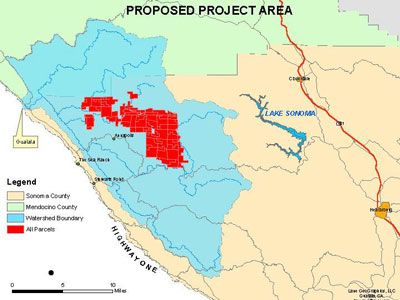
Preservation Ranch,
in the heart of the Gualala River watershed
The heart of the proposed mitigation concept for Preservation Ranch is forest restoration as a means of compensating for the loss of forest to vineyards. Forest restoration has also been proposed as a form of mitigation for some other, smaller vineyard conversions in Annapolis. This suggests a possible trend of a routine permit process for vineyard conversions based on mitigation that relies on the practice of restoration forestry. The nature of mitigation and restoration, particularly of coastal forests in this region, should be given a hard look before they are accepted as a routine permit process.
“Mitigation” in practice is usually different from mitigation as defined by law and regulation. Mitigation in practice is often reduced directly to compensation for an impact to the environment. Compensation is usually treated either as a quid pro quo (something for something else) exchange, or a payment or credit-based system. Restoration of the same type of habitat lost from development of a project is a typical type of compensatory mitigation. When this type of exchange is formally consolidated into “mitigation banks”, with formal pre-approval from permit agencies, developers can simply pay their way towards loss of habitats, without having to argue about the merits of individual restoration plans, or the impacts of projects. Acreage of habitats lost or gained (presumably) becomes the barter system. The underlying premise of compensatory mitigation is that public trust natural resources are successfully replaced and protected, acre for acre by habitat restoration, often with “no net loss” – a key concept originating from an executive order on national wetland policy (established in the 1980s by the elder President George Bush). Faith in the effectiveness of restoration ecology to replace lost habitats and ecological functions is the cornerstone of this type of mitigation.
Mitigation in most environmental laws and regulations, including CEQA, has a very different emphasis. Mitigation in law generally treats compensation as a last resort. Mitigation in law stresses first finding ways to avoid and minimize harm to the environment, and directly fixing problems caused by harmful activities. Compensation for impacts generally applies only after they are reduced to a bare, unavoidable minimum. (This is also known as “mitigation sequencing”). This conservative standard mitigation approach places much greater priority on protection of existing natural resources, and less on attempts to replicate or manufacture them to compensate for their loss. This approach is not popular with most project proponents, since it usually means looking at ways to reduce the project size, alter its configuration, or the range of its activities. Minimization and avoidance of project size or “footprint” may sometimes imply less return on investments for commercial ventures.
The emphasis on compensatory mitigation in the permit process places a great burden on restoration ecology, but also lightens the burden of proof for its effectiveness. Permit agencies can’t do business on the basis of compensatory mitigation if they recognize all the uncertainties about ecological restoration. They have to assume that restoration of habitats will in fact achieve what they promise and predict. Speculative mitigation success has been unacceptable to California courts, but in fact, much mitigation relies on ecological restoration measures that are essentially big, long-term experiments with limited control. Restoration in a mitigation context is thus very different from “pure” or “pro bono” restoration – ecological restoration for its own sake, for speculative net gains in environmental quality, without the certainty of habitat loss due to development. Important natural resources are sacrificed deliberately in a compensatory mitigation context, and at a large scale. Stakes are much lower when “pure” ecological restoration experiments are put into practice. Underachieving restoration experiments may be instructive disappointments, but they don’t contribute to habitat loss unless they are used to compensate for sacrificed real habitats.
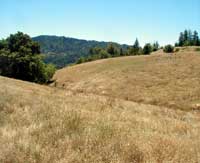 Ecological restoration is not as predictable a technology as, for example, road building or the hydraulic design of flood control channels. Most scientific publications in restoration ecology recognize that it is, and will remain, an experimental science and immature technology, with important variation according to geography and different types of habitats. The ability to predicting or control the specific results of large-scale ecological experiments over long periods of time (the most important yardstick for forest restoration) is generally lacking. A great deal of faith (or, in scientific jargon, “working hypotheses” or “assumptions”) is therefore inherent in restoration ecology.
Ecological restoration is not as predictable a technology as, for example, road building or the hydraulic design of flood control channels. Most scientific publications in restoration ecology recognize that it is, and will remain, an experimental science and immature technology, with important variation according to geography and different types of habitats. The ability to predicting or control the specific results of large-scale ecological experiments over long periods of time (the most important yardstick for forest restoration) is generally lacking. A great deal of faith (or, in scientific jargon, “working hypotheses” or “assumptions”) is therefore inherent in restoration ecology.
Habitats also vary tremendously in their inherent ability to be “restored”, and in the degree of scientific understanding and technical skill with restoration of complex, biologically diverse communities. Only a handful of habitat types have a strong track record for restoration. Some types of wetlands and coastal dunes have some of the longest track records for restoration, and they include mixed results. Unfortunately, “restoration ecology” in forested ecosystems is a very young science, in contrast with the relatively mature applied science of forestry (focused narrowly on production of timber rather than complex ecological functions and high native species diversity). Environmental objectives like conservation of endangered plant or fish and wildlife species, biodiversity, and major ecosystem functions like water quality have only recently begun to merge with forestry sciences. Almost all we know about “restoration” of redwood forests, for example, comes from legacies of inadvertent “experiments” – second-growth forest regeneration, and variation in thinning practices over relatively short periods of time.
Despite the inherent uncertainty and youth of Pacific “restoration forestry” (and its related “sustainable forestry” theme), the demand and hope for what it may offer has already pulled it into the arena of commercial environmental consulting, commercial non-profit “restoration forestry” enterprises, and now, compensatory mitigation. We are at the verge of accepting forest “restoration” as the regulatory currency of exchange for vineyard conversion at increasingly larger scales. And we are at the verge of routinely assuming it can and will deliver what it promises. How well does this assumption square with what we actually know, rather than what we expect or wish for?
What we know about the “degraded” forests proposed for restoration in the Gualala River watershed is that they have been subject to past excesses of timber harvest. We know that they are in variable stages of recovery as second-growth or third-growth forests. Regeneration of vegetation cover on older timber harvest sites is stabilizing landslides and gullies, reducing erosion and sedimentation to shaded streams as cut-over forests mature. Many of our second-growth forests obviously have recovered some populations of sensitive endangered wildlife, such as the northern spotted owl, without the benefit of deliberate “restoration” – only to have these regenerated habitats disturbed by short-rotation timber harvests, or eliminated by vineyards, in some cases. In some cases, forest and soil damage is severe and persistent, especially on steep, unstable ridges, where regeneration of forest is slow and uneven.
|
So where and when is restoration forestry really needed, and where and when will “rest as restoration” – natural forest regeneration – be a sufficient or better alternative? Mitigation works only when developers can get credit for doing something that they pay to be done, but won’t happen by itself. A self-regenerating, “self-restoring” ecosystem has limited utility as raw material for restoration under “no net loss” policies for compensatory mitigation. Proponents of mitigation have a vested interest in emphasizing or “selling” the promises of ecological benefits they can finance with “restoration forestry”, and a similar interest in downplaying or denying the ability of forests to recover on their own. Even environmental advocates can develop uncritical, complacent perspectives about restoration, perhaps because of the scarce optimism it offers.
A rigorous, critical scientific evaluation of restoration forestry proposals is needed before “forest restoration” becomes a standard currency for mitigation of escalating vineyard conversions. We also need sound scientific evaluation of how well natural forest regeneration, in the absence of short-rotation timber harvests, is contributing towards recovery of forest habitats before we assume that “restoration” is necessary and appropriate.
The quality controls and scientific scrutiny for forest restoration are very uneven. Some Habitat Conservation Plans in development for Mendocino and Humboldt County have independent scientific review panels composed of nationally recognized scholars and other experts in forest ecology, forestry, and restoration. At the other end of the spectrum, at least one entrepreneurial non-profit “restoration forestry” operator in the Gualala River watershed appears to finance its work in part through by harvesting and milling irreplaceable downed large old-growth redwood logs and stumps (“buckskins”), ironically advertising both “old growth restoration” and old-growth picnic tables for sale on the same website. Downed old growth redwood is considered by forest scientists as a “structural legacy” providing critical wildlife habitat (especially for old-growth dependent species) that cannot practically be restored at all, yet this is marketed as “old growth restoration”. Skid roads are also constructed in some “forest restoration” sites to harvest buckskins and thin tanoaks for firewood. This nominal “restoration forestry” operation has in fact been proposed as mitigation for vineyard conversions in Annapolis.
In contrast, adjacent ordinary commercial industrial timber harvests, regulated under California Forest Practice Rules, deliberately leave downed logs, snags, and old stumps as protected wildlife habitat. The forest management plans of fledgling community-based nonprofit restoration forestry organizations, in contrast, are still in development, not practice. They are not yet available to provide a proven working model for mitigation. This is a paradoxical spectrum of forest management practices for non-profit “forest restoration” and commercial for-profit timber harvest. It is even more paradoxical to consider which has been proposed as mitigation for converting forests to croplands.
Who will design, regulate and monitor “forest restoration” practices used as mitigation, and ensure proper scientific supervision for the many decades it will take to replace existing forests? Can we ensure that restoration forestry practices will be a significant ecological improvement over regulated industrial timber harvest practices? How long will it actually take to accrue measurable forest restoration benefits to offset the immediate, certain, and complete loss of habitat when vineyards replace forests? Who will judge whether forests are so “degraded” or irreparably damaged that restoration forestry should count as compensatory mitigation? Will that discussion be dominated by proponents of development and mitigation and permit agencies, or by the public and independent scientific review panels? Will the emphasis on compensatory “restoration” drown out discussion of the primary goals of mitigation – namely, avoiding and minimizing impacts?
 Vigilant public participation will be essential to ensure that political and regulatory decisions about vineyard conversion, and its mitigation, are fully informed by rigorous public interest review, and scientific scrutiny. Given the surprisingly early start of (yet unregulated) large-scale vineyard conversion on Evans Ridge, it is urgent for public and scientific discussion to begin fast.
Vigilant public participation will be essential to ensure that political and regulatory decisions about vineyard conversion, and its mitigation, are fully informed by rigorous public interest review, and scientific scrutiny. Given the surprisingly early start of (yet unregulated) large-scale vineyard conversion on Evans Ridge, it is urgent for public and scientific discussion to begin fast.
Peter Baye, Ph.D., a resident of the Gualala River watershed, is a plant ecologist with over 25 years professional experience in restoration ecology, environmental protection, regulation, and planning.
 Friends of Gualala River Protecting the Gualala River watershed and the species living within it
Friends of Gualala River Protecting the Gualala River watershed and the species living within it
